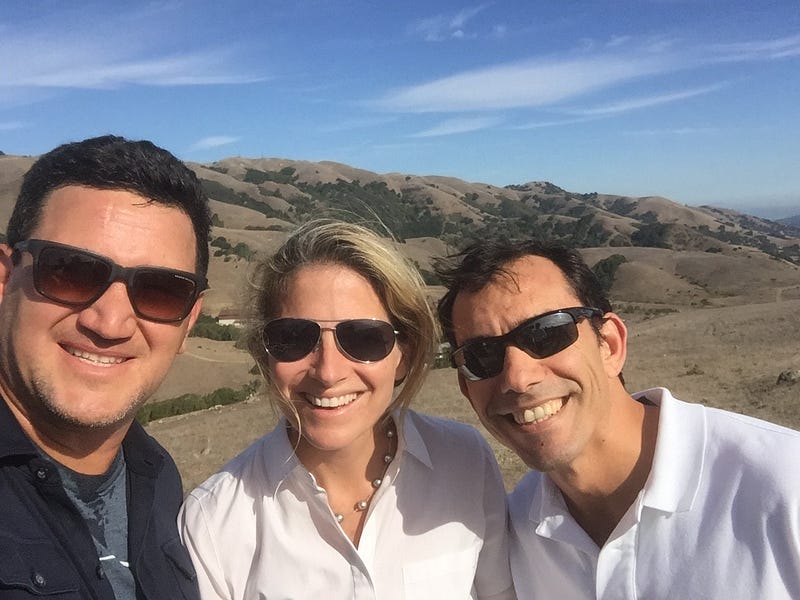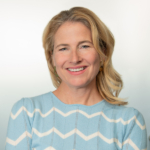Today, Renaissance Learning’s acquisition of Nearpod for $650M was finalized. It’s a huge validation for Guido, Felipe and Emi, three friends who built one of the most beloved and widely used products in education.
From the start, Guido and team did things differently, shaking up the stagnant curriculum industry where deals got done over expensive dinners and teachers paid the price with inferior products. With a product-forward approach, Nearpod pioneered a series of innovations in sales, content and go-to-market that forever changed the industry.
Nearpod won the hearts of teachers and defied the old narrative that districts would never buy products that teachers championed. Today, Nearpod has contracts with San Francisco Unified, Chicago Public Schools, Los Angeles Unified, Atlanta Public Schools, the State of Utah, and thousands more.
For the past eight years, it has been our privilege to work alongside Guido, Felipe, Emi, Pep and team as their partners and investors. It’s been a remarkable journey, and we could not be happier for these talented underdogs whose hustle and inventiveness set a new bar for K-12 edtech.
We wrote our first check in Nearpod in 2013 out of our Seed Fund and invested six more times, including the last round in 2019, two and a half years after Insight Ventures took majority control. All in, we invested almost 10 percent of the Reach I fund in Nearpod and held it all to the exit. We are equally proud that its proceeds will flow to the most diverse set of employees I have yet to see in 15 years of investing.
Some in the industry were surprised by the outcome, not fully appreciating the size and breadth of Nearpod which has become ubiquitous in the US, is growing rapidly abroad, and has successfully extended into corporate and higher ed. The brand is now a household name among K-12 educators.
I was fortunate to sit on Nearpod’s Board for eight years and as Nearpod grew, so did Reach. We learned together, our stories interwoven as founders trying to grow and realize our respective visions.
How did three Founders who grew up in Argentina create a platform used in 75 percent of US classrooms and ultimately worthy of one of the largest venture-backed K-12 exits ever?
As with nearly all startups, the path was neither linear nor easy. Nearpod’s journey had its share of challenges and naysayers, but the team persisted and held firm to an idea: that learning could be a lot more engaging if the laptops, computers, tablets and phones that were flooding our schools had a software layer custom-built for teachers to manage the childrens’ on-screen attention.
For those tracking the education sector, it was clear even back in the early 2000s that we were moving toward a 1:1 world in K-12 education, meaning computers and tablets would become a powerful learning tool for teachers at the heart of lesson delivery, assessment and content. And every child would soon have access to one.
In 2004, my last year as a history teacher, textbooks were already lagging behind the Internet. Teachers were Googling topics to find materials that were more modern and engaging. That bar was low; textbooks felt like tomes from a bygone era, and the yellowing worksheets like little pieces of busywork for students who had years before embraced the pace of video games.
In late 2012, Michael Staton, who was working with Reach, urged me to meet Guido. I was reluctant because I had mistakenly thought Nearpod was based in Brazil¹. At the time we could not invest outside of the United States. After more than a few emails, we met at Starbucks. Guido wasted no time and demoed his product with two tablets. It was magic. Full stop. Nearpod synchronized the content on our tablets, enabling a seamless data channel between teacher and student.
To this day, those outside of education find it hard to grok why Nearpod is so special². At Stanford I studied the practices of “master teachers” who differentiated their instruction to accommodate a broad range of learner readiness³. They challenged the kids who needed more advanced learning opportunities and supported those who struggled with more fundamental concepts. The problem was that differentiation required both knowledge and extra work for the teacher, which is why only experienced teachers practiced it well. Nearpod enabled a way for teachers to manage the variability in the classroom via a tablet, phone or computer by pushing out different lessons, content and assessments to meet the various needs of individual students. With Nearpod, differentiation became accessible for a lot more teachers. It was and still is one of the best tools for personalized learning.

We invested immediately and began digging in with the team that was split between Menlo Park and Miami. The entire Reach team got behind Nearpod, helping to recruit talent, articulate the pedagogical framework and raise money. The truth is, Reach was just getting started in those early years. We did not have the decades of investing wisdom some venture capitalists draw upon when supporting a company, but I’d like to think we made up for it in hustle and a deep, unwavering belief in the team. These last eight years of partnership have forged friendships unique to those who build together, share wins and losses, and commit to one another through it all.
A Culture of Innovation
One of the hallmarks of Nearpod’s culture is innovation. Guido was a fellow at Stanford’s d.school and inculcated Nearpod with the ethos of design thinking. They experimented constantly. The first content store MVP was built on an Ebay template. They tried long form movie-like content, short UGC content, and everything in between. They partnered, bundled and built their own. They doubled down on what teachers loved and killed the bad ideas fast. While this may sound typical by Silicon Valley standards, it was novel in K-12 education. It was not uncommon for edtech companies to outsource the development of a product, build a sales force to sell it, and never touch the code again.

Another one of Nearpod’s innovations was their B2C2B go-to-market strategy that disproved the axiom that K-12 edtech companies were destined for long, expensive top-down sales cycles. Nearpod pioneered bottoms-up sales in K-12, similar to SurveyMonkey, DropBox and others who had consumerized the enterprise. Teachers, called PioNears, became ambassadors who trained and shared teaching ideas with their peers, and like most Nearpod affairs, had a ridiculously fun time doing so.


In reality, customer acquisition costs in education can be exceptionally low when they tap into a strong emotional connection with their customers. In fact, in a typical 48 hour window, Nearpod is positively referenced more than 150x on Twitter by teachers, more than double some of the leading venture-backed consumer education companies. Teachers recommend Nearpod like crazy, their NPS is 76.
Diversity from the Ground Up
Guido, Felipe and Emi built an inclusive team with a majority URM C-level suite. When you walk through the halls of Nearpod’s headquarters in Miami, Spanish and English are spoken throughout and often in the same conversation.
Their diversity helped them see the potential in joining forces with Flocabulary, a company they acquired in 2019. Shauntel and Esteban introduced the Flocab founders Blake and Alex to Guido. Shauntel was about to lead an investment in Flocabulary but thought the two companies may have synergies that could accelerate their growth. Flocabulary, creator of fresh, modern hip-hop videos to promote literacy, brought video and a library of culturally-responsive content to the Nearpod platform. It proved to be a prescient move that positioned them well for the evolving appetite for instructional materials.

The Team
Guido, Felipe and Emi formed a trio that was complementary and stable. Like an old marriage, these three could finish each other’s sentences. They always supported each other and could give honest feedback. In eight years, I never heard them disparage one another.

The addition of Pep Carrera as CEO was critical for leading their next phase of growth. Pep won the respect of this team through his steady and honest leadership.
The Nearpod team is deep with talent. Maria Barrera was the Swiss army knife in the early years. Jennie Kristoffersen was a former teacher from Chicago and became Chief Strategy Officer. Having an educator in this role proved to be a smart move. The contributions of Sara Romero-Heaps, VP of Product and another former teacher, cannot be overstated. The amazing CFO Severine Vieux professionalized the finances, Sebastian Feldman, Head of Product was always there, quietly and relentlessly building, and the tireless Karin Similaro drove sales through authenticity and connection. There simply isn’t space to mention the many others who have been part of this amazing team.
This team hustled, obsessed over their customers and boldly innovated. And they supported one another in a culture that exuded energy and collaboration.
There are a lot of reasons to be excited for this next chapter for Nearpod. Schoolzilla, a previous Reach company, has found a happy home and huge growth at Renaissance. Lynzi, Schoolzilla’s founder said, “it has been wonderful to be part of Renaissance this year and finally have my dreams of impact-at-scale come to pass. The company’s mission-focus and values have turned out to be pretty compatible with ours.” I know that the Nearpod team will be supported and find values alignment with this great company.
This milestone, as wonderful as it is, is tinged with a little sadness for the joy and satisfaction that all of us at Reach have felt working with this company.
When it became clear that the acquisition would happen during a Board meeting, I became so emotional I literally could not speak for fear that I would cry. And when I finally did, my voice, weak and trembling, agreed this would not be the end, but a new beginning where Nearpod would go on to reach its next hundred million kids.
¹The tech team was based in Brazil and the Founders in Miami
²For those who have never taught, it’s challenging to understand the management complexity of the classroom.
³For my MA thesis at Stanford School of Education. I co-published a piece drawing from my MA thesis in ASCD here.


